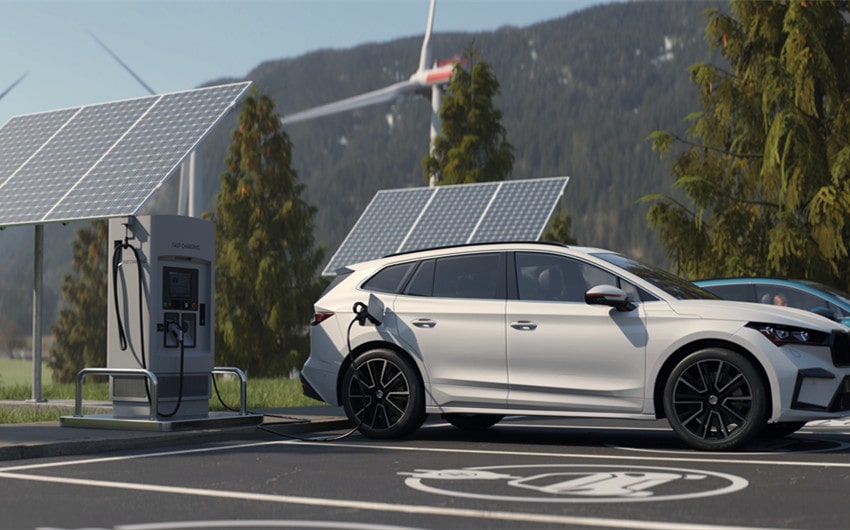9 Legitimate Reasons Why Electric Cars Are Bad for Many Drivers
Electric cars are everywhere—on billboards, in TV ads, and proudly displayed in your neighbor’s driveway. They’re sleek, silent, and branded as the solution to climate change and rising fuel costs. But despite the praise, you might be wondering: are they really all they’re cracked up to be? The truth is, there are some legitimate reasons why electric cars are bad for many drivers, especially when it comes to cost, convenience, and infrastructure. If you’ve been feeling unsure about making the switch to an EV, you’re not alone—and you’re not wrong to hesitate.
In this article, we’ll explore 9 practical, often overlooked reasons why electric cars may not be the best fit for your lifestyle—at least not yet. This isn’t about bashing new technology. It’s about being realistic, informed, and aware of what you’re actually signing up for when you go electric.
The Financial Side: More Expensive Than You’d Think
1. The Sticker Shock Is Real
Let’s start with the obvious: electric cars are expensive. Even with government incentives and tax rebates, the average price of a new EV is still significantly higher than a comparable gas-powered vehicle. For example, many popular electric models start in the $40,000–$50,000 range, while budget-friendly gas cars can cost less than half that. While prices have slowly started to drop, truly affordable electric options remain rare.
And it’s not just the car itself. If you want to charge at home, you’ll likely need to install a Level 2 charger, which can cost anywhere from $500 to $2,000—including installation. For many people, that’s an unexpected expense on top of an already high purchase price.
The financial hurdle is even steeper for those living paycheck to paycheck. For many families, owning a vehicle is a necessity, not a luxury—and a pricey EV simply isn’t feasible.
2. Repairs and Battery Replacement Can Break the Bank
Another hidden cost of electric cars is maintenance—specifically, when things go wrong. While EVs generally require less routine maintenance than gas vehicles (no oil changes, fewer moving parts), when they do need repairs, it can get expensive fast.
That’s because EVs require specialized knowledge and tools. Not every mechanic is trained or equipped to handle electric drivetrains, battery systems, or regenerative braking. You may have to take your EV to a dealership or a specialized service center, where costs are often higher than your local shop.
And then there’s the battery. Over time, all lithium-ion batteries degrade, which means your EV will eventually lose range. Replacing an electric car battery is no small bill—it can cost anywhere from $5,000 to $20,000, depending on the model. While warranties typically cover the battery for 8 to 10 years, what happens after that? If you plan to keep your car for the long haul, the potential for a massive repair bill looms large.
Range and Charging: Where Electric Cars Fall Short
3. Charging Isn’t as Convenient as It Sounds
The promise of plugging in your car overnight and waking up to a full battery sounds simple enough—until you try to do it in real life. For people who live in single-family homes with garages, this might be easy. But for apartment dwellers, renters, or those without dedicated parking, home charging is a logistical nightmare.
You might be forced to rely on public chargers, which can be few and far between, especially in suburban or rural areas. Even when you do find a station, you may face long waits, broken chargers, or high usage fees. Unlike a gas pump, where you’re in and out in five minutes, EV charging can take 30 minutes to several hours—depending on the charger and the state of your battery.
And those fast chargers? They’re not always kind to your battery’s long-term health. While they’re convenient in a pinch, regular use can accelerate battery degradation, shortening the lifespan of your vehicle’s most expensive component.
4. Range Anxiety Is Still a Thing
One of the most talked-about drawbacks of EVs is range anxiety—the fear of running out of charge before reaching your destination. And while modern electric cars boast ranges over 200 or even 300 miles, the real-world experience often falls short.
Factors like driving speed, weather, terrain, and use of climate control can all drain the battery faster than expected. Cold weather, in particular, can reduce an EV’s range by 30% or more. Suddenly, that 250-mile range drops to 170—and that’s before you factor in highway speeds or elevation changes.
This makes long road trips stressful and sometimes impractical. You’ll find yourself planning routes around charging stations, watching your range like a hawk, and building in time for extended charging breaks. For drivers used to the convenience of refueling anywhere in 5 minutes, this adjustment can feel like a major step backward.
5. Inconsistent Charging Infrastructure
One of the biggest systemic issues facing electric vehicles today is the lack of consistent, reliable charging infrastructure. In urban areas, you might find a decent selection of fast chargers—though they’re often crowded. But venture outside city limits, and the network becomes patchy at best.
This is particularly problematic for people who live in rural communities, travel long distances, or work jobs that require flexible mobility. If there isn’t a charger where you’re going—or if the only station in town is out of service—you’re stuck. And unlike gas, which is available on virtually every corner, EV charging is still playing catch-up.
Even Tesla’s proprietary Supercharger network, while expansive, isn’t universally accessible to all EV drivers—though that’s slowly changing. Until the infrastructure is truly nationwide and consistently maintained, charging remains one of the biggest barriers to mass EV adoption.
Environmental Realities: Not as Green as You Think
6. Battery Production Has a Dirty Footprint
Electric cars are marketed as eco-friendly alternatives to gas guzzlers—but the reality is more complex. While EVs do produce zero tailpipe emissions, their environmental impact isn’t zero.
The production of EV batteries requires large amounts of lithium, cobalt, and nickel—materials that are mined in environmentally and ethically troubling ways. Mining operations can destroy ecosystems, pollute water sources, and rely on exploitative labor practices in countries with few protections.
And while EVs are still generally cleaner over their lifetime than internal combustion vehicles, the gap is smaller than many people realize—especially if the electricity powering them comes from coal or natural gas. The “green” label is often oversimplified, and in some cases, misleading.
7. Electricity Still Comes from Fossil Fuels
Here’s the part that’s easy to forget: just because a car is electric doesn’t mean it runs on clean energy. In many parts of the world, the electricity grid is still heavily dependent on fossil fuels. That means when you plug in your EV, you might be charging it with coal-generated power.
Yes, renewable energy is growing, and yes, EVs tend to get cleaner as the grid gets greener. But right now, in many regions, driving an EV isn’t as environmentally friendly as it sounds. In some states or countries, the emissions associated with charging an electric car are only marginally better than those from a fuel-efficient gas vehicle.
This isn’t to say EVs are bad for the planet—but it’s important to recognize that they’re not a silver bullet. The source of your electricity matters, and without widespread clean energy, electric cars won’t live up to their full environmental potential.
Lifestyle Mismatches: When EVs Just Don’t Fit
8. Not Great for Towing, Cold Weather, or Rural Areas
If you’re someone who tows a trailer, drives in snowy mountains, or lives far from the nearest city, electric cars may not meet your needs. EVs struggle with towing heavy loads, as it drastically reduces range and puts stress on the battery. That’s a problem for contractors, campers, and anyone who uses their vehicle for more than point-to-point commuting.
Cold weather is another challenge. Not only does it reduce battery efficiency, but using the heater and defroster drains energy quickly. Combine that with slippery roads and limited range, and you’ve got a less-than-ideal winter vehicle.
For rural drivers, the math just doesn’t work. Sparse charging options, unpredictable terrain, and long commutes mean that EV ownership comes with constant risk and inconvenience.
9. Fewer Models and Less Flexibility
One of the less discussed but very real issues with EVs is the lack of model diversity. While the market is growing, many electric cars are still sedans, compact SUVs, or futuristic concept-style vehicles. If you’re looking for a full-size truck, a budget minivan, or a basic work vehicle, your choices are extremely limited.
And even among the models that do exist, many are priced and designed with a specific lifestyle in mind—often tech-savvy urban dwellers with disposable income. If your needs are more utilitarian, or if you simply want a no-frills vehicle that gets the job done, you may be out of luck.
The flexibility of internal combustion vehicles—across styles, price points, and use cases—is something EVs haven’t caught up with yet. Until they do, they’ll remain inaccessible or impractical for a significant portion of drivers.
Conclusion: Should You Reconsider the EV Hype?
Electric vehicles are impressive. They represent an exciting shift in automotive technology and play a crucial role in the transition toward cleaner transportation. But let’s not pretend they’re perfect. There are very real, very valid reasons why electric cars are bad for certain people, places, and situations.
Whether it’s the cost, the charging challenges, or the lifestyle mismatches, EVs come with trade-offs that are too often overlooked in the rush to go green. And that’s okay. You don’t have to be anti-environment to admit that electric cars might not be right for you—at least not yet.
As the technology improves, the prices drop, and the infrastructure expands, more people will be able to make the switch comfortably. But until then, asking hard questions and thinking critically isn’t just smart—it’s essential.
So if you’ve been second-guessing the EV hype, trust your gut. Choosing the right vehicle should be based on facts, not just trends.

